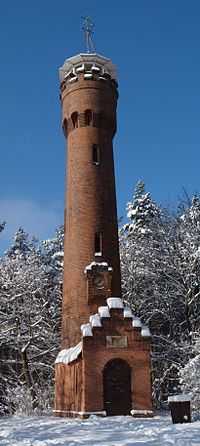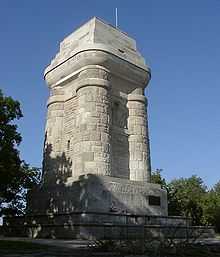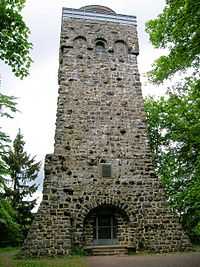Bismarck tower



Bismarck towers (German: Bismarcktürme) are a unique genre of German monuments, built to honour the chancellor of the North-German Federation (1866-1871) and Germany (1871-1890), Otto von Bismarck, according to a specific standard model. A total of 240 of these towers were built between German unification and the National Socialist takeover, i.e. between 1869 and 1934. They were built in various styles in locations across the German Empire, including its colonies in Papua New Guinea, Cameroon and Tanzania, as well as in areas of Europe that, at the time, were part of Germany, but now lie within the borders of other European states. Towers were also built in Austria and Chile. Of the original 240, 173 remain.
The German Student Corporation chose one of the designs submitted by German architect, Wilhelm Kreis, in an 1899 architecture competition. The award-winning Götterdämmerung design was selected as the standard model for all Bismarck columns. This massive and squat tower design could be built to different heights and widths depending on the amount of money donated for the particular monument.
Every Bismarck tower was also intended as a beacon. Their braziers were to be lit on specified days in honour of ex-chancellor Bismarck to commemorate his achievement in unifying Germany in 1871.
The architects of these towers included Wilhelm Kreis himself, who built 58 (47 to the Götterdämmerung design), and Bruno Schmitz.
See also
- Bismarck Tower, Janówek (Ober-Johnsdorf) - the first Bismarck tower, 1869
- Bad Kissingen Bismarck Tower
- Ballenstedt Bismarck Tower, near Opperode (Harz)
- Hanover Bismarck Tower (removed in 1935)
- Jakobsberg Bismarck Tower
- Salzgitter Bismarck Tower
- Stettin Bismarck Tower
- Wiesbaden Bismarck Tower
- Viersen Bismarck Tower
- Bismarck Tower, Metz - the only Bismarck tower in France
- Bismarck Tower, Zielona Góra (Grünberg)
- Aachen Bismarck Tower
- Mirador Alemán, Concepcion, in Chile
External links
| Wikimedia Commons has media related to Bismarck tower. |
Coordinates: 50°40′30″N 7°09′02″E / 50.67500°N 7.15056°E
